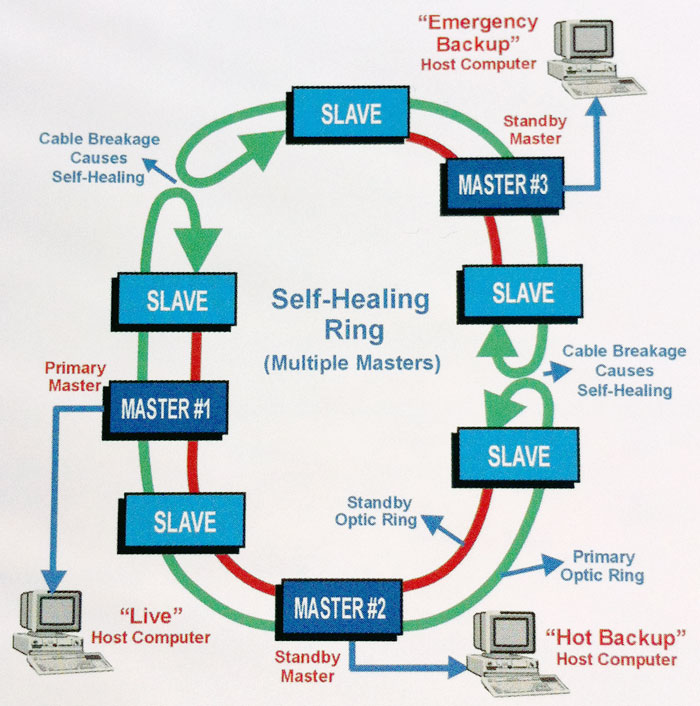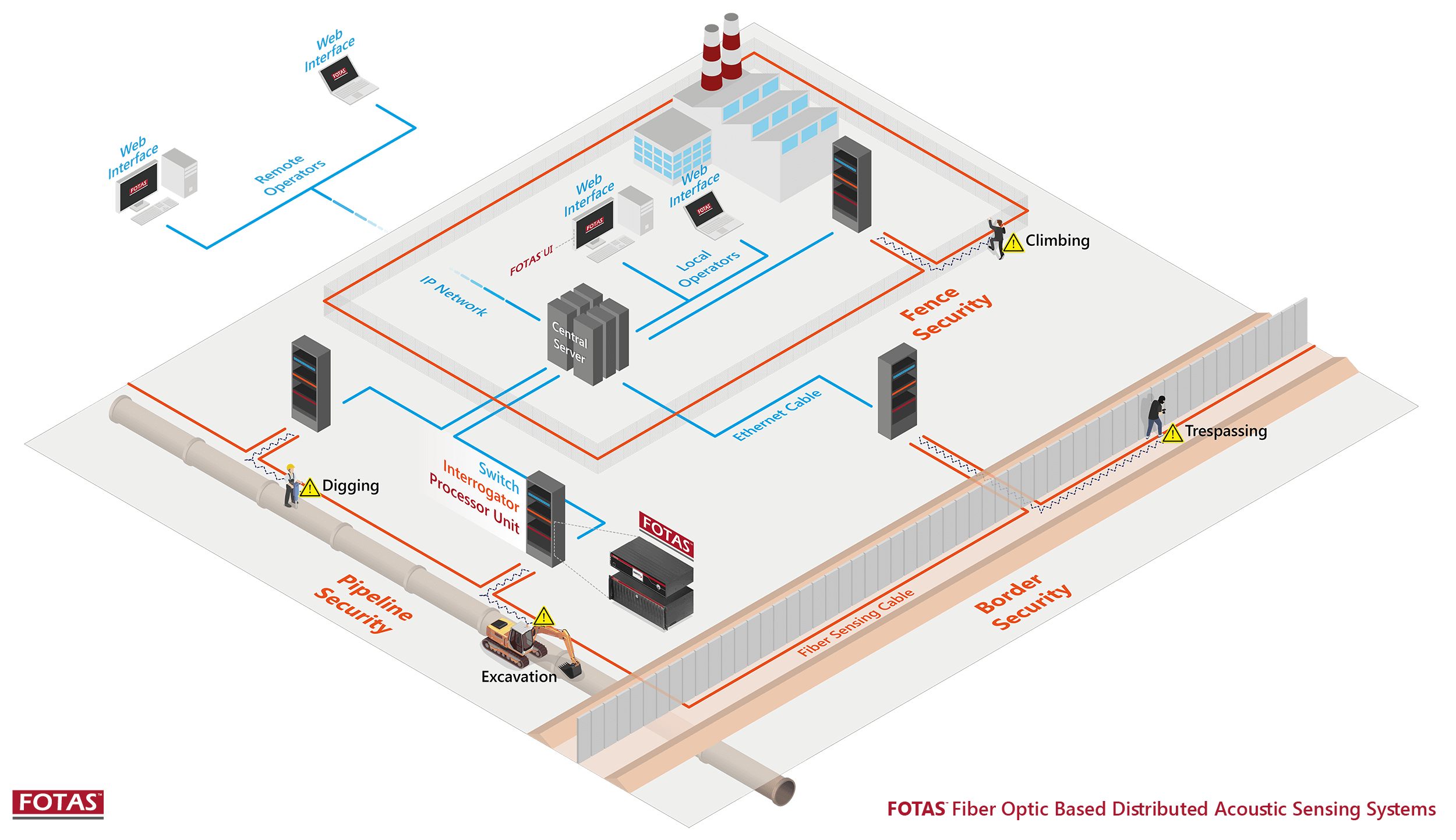Secure Your Residential Property With Trusted Fiber Optic Security Solutions
In an age where safety dangers are significantly sophisticated, the demand for effective protection solutions is critical. Fiber optic safety and security systems stand out by providing phenomenal integrity and performance, leveraging innovative light transmission modern technology to improve surveillance capacities. security fibers. Comprehending the complexities of fiber optic safety can light up the path to safeguarding your residential property a lot more efficiently.
Advantages of Fiber Optic Safety And Security
Fiber optic security options provide a series of benefits that make them increasingly important in today's digital landscape. One of the most considerable advantages is their remarkable data transfer capacity, which enables the transmission of large amounts of data over cross countries without considerable signal degradation. This capability is especially beneficial for safety systems that count on high-definition video security and real-time monitoring.
Additionally, fiber optic cable televisions are naturally a lot more secure than standard copper electrical wiring. They are unsusceptible to electro-magnetic disturbance, making them less vulnerable to hacking or eavesdropping. This improved safety and security is vital for securing sensitive information and maintaining the integrity of security systems.
In addition, fiber optics are much more long lasting and immune to ecological aspects, such as wetness and temperature level changes, making sure long-lasting dependability and decreased upkeep costs. The light-weight nature of fiber optic wires also simplifies setup processes, permitting for greater adaptability in system design.
How Fiber Optic Equipment Work
In contemporary safety and security applications, the procedure of fiber optic systems depends on the concepts of light transmission with adaptable glass or plastic fibers. These fibers are created to carry light signals over fars away with marginal loss, making them ideal for transferring information connected to safety tracking. The core of the fiber, bordered by a cladding product, makes sure that light signals stay contained within the core via a phenomenon called overall interior representation.
When incorporated right into security systems, fiber optic cable televisions can transfer data from various sensing units, such as cams, movement detectors, and alarms, to a central surveillance terminal. The high data transfer capacity of optical fiber enables the transmission of huge amounts of information all at once, allowing real-time surveillance and prompt reaction to possible dangers.

Kinds Of Fiber Optic Safety Solutions
Numerous types of fiber optic security solutions have actually emerged to enhance surveillance and defense across different environments. One popular option is fiber optic border breach discovery systems (PIDS), developed to check and protect residential or commercial property borders through the detection of vibrations and disruptions along fiber optic cords. These systems offer real-time signals, making it possible for prompt feedbacks to unauthorized access efforts.
One more reliable remedy is fiber optic video monitoring. address This innovation leverages high-def cameras linked through fiber optic cords to transmit video information over cross best site countries without significant loss of high quality. This configuration is especially beneficial in extensive locations, such as airports and industrial sites, where typical copper cables may fail.
In addition, fiber optic sensing units are significantly utilized for ecological monitoring, spotting modifications in temperature level, stress, or acoustic signals that could suggest security breaches or hazardous conditions. These sensors offer high sensitivity and precision, making them ideal for critical framework defense.

Installation and Maintenance Tips
Efficient setup and upkeep of fiber optic protection solutions are vital for guaranteeing their optimum efficiency and durability. Fiber optic cable televisions ought to be directed securely, staying clear of sharp bends or twists that can jeopardize their honesty.
During installment, it is suggested to carry out detailed screening of the system to validate that all elements are functioning properly. Normal upkeep checks ought to be arranged to inspect the fiber optic wires for any indicators of wear or damages, in addition to to make certain that links remain secure. Cleansing the connectors occasionally is also essential to avoid signal loss because of dirt or particles.
Moreover, maintaining an updated inventory of mounted elements and their requirements can help with easier troubleshooting and upgrades. By adhering to these installment and upkeep tips, homeowner can take full advantage of the efficiency of their fiber optic security remedies, ensuring a reliable defense versus potential threats.
Contrasting Expenses and Performance
When evaluating fiber optic safety remedies, recognizing the balance between expenses and efficiency comes to be paramount (security fibers). Organizations needs to take into consideration the upfront financial investment, recurring upkeep costs, and the long-lasting worth these systems provide. While fiber optic systems may need a higher preliminary setup price contrasted to typical copper wiring, their sturdiness and lowered susceptibility to electromagnetic interference typically convert to reduced upkeep prices with time
Performance is one more essential variable; fiber optic protection systems use improved data transmission speeds and improved integrity. They can cover bigger ranges without signal deterioration, making them suitable for large properties or remote places. The high data transfer capability sustains sophisticated safety and security applications, such as high-def video clip surveillance and real-time monitoring, which are vital for thorough safety monitoring.
Eventually, the selection in between price and performance should be assisted by specific security demands and risk assessments. Organizations has to dig this examine their unique needs, taking into consideration variables like residential or commercial property size, safety hazards, and technical innovations. By carrying out a thorough cost-benefit analysis, stakeholders can make educated decisions that align with their security goals while ensuring an audio investment in fiber optic technology.
Conclusion
In final thought, fiber optic protection options offer significant advantages in terms of performance, integrity, and resistance to environmental disturbances. Inevitably, the adoption of fiber optic modern technology stands for a forward-thinking technique to guarding residential or commercial properties versus evolving security hazards.